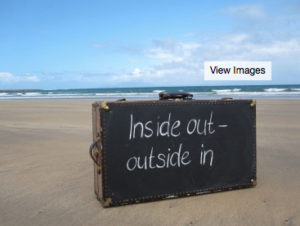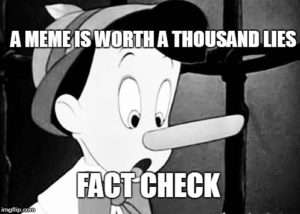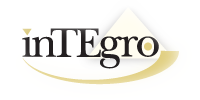Does anyone remember the 1980’s ad: “Is it real, or is it Memorex?” The ad challenged TV viewers to distinguish between the announcer and a videotape of the announcer using 3M’s Memorex brand of videotape. (Perhaps I should have first asked if you remember “videotape”!) The ad has been replaying in my head for weeks, after countless instances of attempting to determine what’s real and what isn’t. Today we are bombarded by conflicting media reports, Facebook postings, viral messages, #FakeNews and the like that challenge us to distinguish what’s true, perhaps partially true or outright false. The stakes are of course significantly higher in most instances than determining if “it’s real or Memorex;” presidential elections, the correctness of strategic decisions and even national security can weigh in the balance.
Much has been written about the importance of authentic leaders, legitimately so. We value leaders  who are on the outside what they profess to be on the inside, those who “walk the talk.” That’s “inside-out authenticity:” trueness to inner nature, purpose and values.
who are on the outside what they profess to be on the inside, those who “walk the talk.” That’s “inside-out authenticity:” trueness to inner nature, purpose and values.
There is another equally important dimension of authenticity, “outside-in authenticity:” the capacity to discern what is real around us, to notice what is important and to distinguish among truths, potential truths and falsehoods. I’ve always appreciated the noted leadership coach Warren Bennis’ view that “a leader’s first job is to define reality.” In a business or strategic context reality refers largely to environmental, market and competitive trends, as well as to the true state of our organization. Generally, “outside-in authenticity” or the capacity to “define reality” entails the capacity to observe what is relevant, discern what is true and determine the implications. Such a capacity is growing in importance for the health of communities, businesses and democratic institutions.
Here are some suggestions for strengthening outside-in authenticity:
- “Stop, look and listen.” So many of us are consumed by busyness or routine that we fail to take the time or discipline ourselves to simply observe with a critical eye and hear with a critical ear for what’s new. As Yogi Berra put it: “It’s amazing what you can see when you’re looking.” A corollary is that it’s amazing what you can hear when you’re listening.
- Be self-aware and conscious of filters and biases. It is too easy to see what we want to see and are looking for or to hear what we want to hear or are listening for. If you haven’t tried this before, for a demonstration check out the “gorilla test” at https://www.youtube.com/watch?v=vJG698U2Mvo It is important to be conscious of how we interpret information and communication based on past experience, preferences, hopes or associations, which may no longer be valid. Of course it’s useful to help others do the same, then we can get closer to determining what’s actually true. The French journalist Anais Nin was right: “We don’t see things as they are, but as we are.”
- Manage emotions. We cannot deny our emotions, but can be more aware of how they might influence judgment. Personal likes and dislikes are separate matters from what might be true. Have we really heard and seriously considered what might be valid input from someone we dislike? Are we being unduly influenced by someone we like?
- Beware of internet “bubbles.” In his 2011 TED talk “Beware of online internet filters,” Eli
 Pariser warns of internet algorithms used by social media platforms that filter searches without our knowledge based on our prior search history and postings. The effect is more concentrated exposure to what we already believe or think we know; conservatives reinforce their conservative views and liberals reinforce their liberal views, for example.
Pariser warns of internet algorithms used by social media platforms that filter searches without our knowledge based on our prior search history and postings. The effect is more concentrated exposure to what we already believe or think we know; conservatives reinforce their conservative views and liberals reinforce their liberal views, for example. - Examine assumptions; question past knowledge and experience. Especially given today’s rapid rate of change and shifting global dynamics, chances are that what has been true may no longer be true. Ask what conditions or changes might invalidate assumptions or prior experience and knowledge; what are the chances of those conditions or changes, and how might that affect the situation? How might you see a situation differently if you didn’t know what you know now? (Mark Twain was right: “It isn’t what we don’t know that will get us in trouble; it’s what we know that just isn’t so!”)
- Examine sources. “Fool me once, shame on you; fool me twice, shame on me.” The same reasoning should be applied to our information sources. How reliable have sources been in the past; what is their track record? Is the person, media outlet, posting or other source trustworthy? The admonition “trust but verify” can be applied here.
- Consult multiple sources. Especially if there is either doubt or we might be overly confident about the legitimacy of a source or truthfulness of information, check multiple sources; the more sources and the more diverse the sources the better. Do not dismiss contrarians or seemingly improbable claims out of hand; keep an open mind and use tools here to entertain possibilities. Ten years ago who would have believed that Facebook’s market capitalization would exceed General Electric’s and be 3Xs 3M’s? Ten months ago how many could predict the outcome of our last presidential election?
- Fact check. Intentional or not, what sounds convincing may not actually be true; political
 campaigns offer ample evidence if we pay attention to fact-checkers and “Pinocchio scales.” Repetition, reputation, delivery and other factors can be influential, but do not correlate with truth; in important matters we need to be our own fact checkers by consulting multiple sources and critically evaluating each claim.
campaigns offer ample evidence if we pay attention to fact-checkers and “Pinocchio scales.” Repetition, reputation, delivery and other factors can be influential, but do not correlate with truth; in important matters we need to be our own fact checkers by consulting multiple sources and critically evaluating each claim. - Ask questions. How does a source know something is true? What is its source? Has a claim or information been corroborated; by what or whom? What else would need to be true or what assumptions would need to be valid for this to be true? “What information or perspectives might we be missing?” Who has what to gain or lose depending on the veracity of a story?
- Slow down. In our rush for quick answers or to be the first spreading news we commonly settle for the first story. There is always more than one perspective or “right answer.” It takes time to gather more intelligence and evaluate it critically, but it will be less than the time required to undo the damage from bad decisions based on bad information.
- Weigh risks and consequences. What are the risks and consequences of acting on information that we believe to be true versus waiting to verify it? Is there a legitimate urgency to share news or act on it that outweighs potential damage if it’s untrue?
In his Republic, the Greek philosopher Plato describes a group of prisoners chained to a cave wall, unable to see actual objects outside the cave entrance and only able to make out shadows cast by the sun. “Outside-in authenticity” requires stepping out of our own “caves” and into the light. Let’s make it a resolution in the coming year to sharpen our senses and ability to distinguish light from shadows.
“Sometimes, leadership differs from non leadership only in that leadership views the world with a slightly larger lens.”
John Carver
“We can ignore reality, but we cannot ignore the consequences of ignoring reality.”
Ayn Rand
Image credits: wired.com, themodel.ie, John Berkeley / economist.com, imgflip.com





